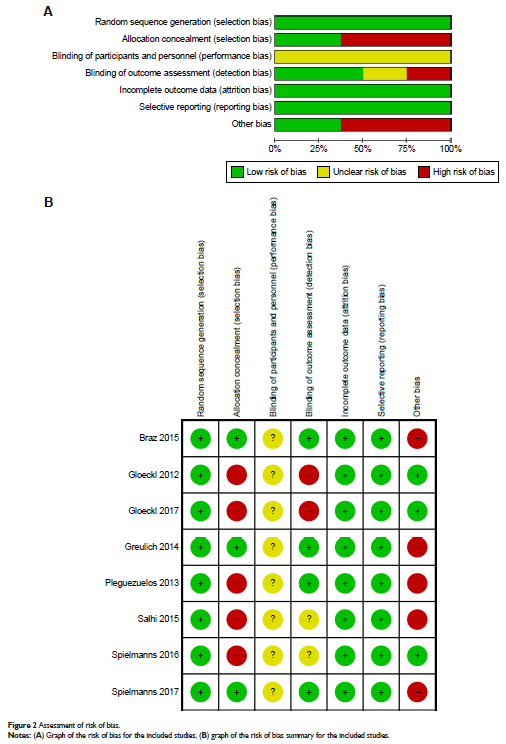108384
论文已发表
注册即可获取德孚的最新动态
IF 收录期刊
- 3.4 Breast Cancer (Dove Med Press)
- 3.2 Clin Epidemiol
- 2.6 Cancer Manag Res
- 2.9 Infect Drug Resist
- 3.7 Clin Interv Aging
- 5.1 Drug Des Dev Ther
- 3.1 Int J Chronic Obstr
- 6.6 Int J Nanomed
- 2.6 Int J Women's Health
- 2.9 Neuropsych Dis Treat
- 2.8 OncoTargets Ther
- 2.0 Patient Prefer Adher
- 2.2 Ther Clin Risk Manag
- 2.5 J Pain Res
- 3.0 Diabet Metab Synd Ob
- 3.2 Psychol Res Behav Ma
- 3.4 Nat Sci Sleep
- 1.8 Pharmgenomics Pers Med
- 2.0 Risk Manag Healthc Policy
- 4.1 J Inflamm Res
- 2.0 Int J Gen Med
- 3.4 J Hepatocell Carcinoma
- 3.0 J Asthma Allergy
- 2.2 Clin Cosmet Investig Dermatol
- 2.4 J Multidiscip Healthc

全身振动训练 - 为 COPD 患者提供更好的护理: 系统综述和荟萃分析
Authors Zhou J, Pang L, Chen N, Wang Z, Wang C, Hai Y, Lyu M, Lai H, Lin F
Received 4 June 2018
Accepted for publication 15 August 2018
Published 10 October 2018 Volume 2018:13 Pages 3243—3254
DOI https://doi.org/10.2147/COPD.S176229
Checked for plagiarism Yes
Review by Single-blind
Peer reviewers approved by Dr Colin Mak
Peer reviewer comments 2
Editor who approved publication: Professor Chunxue Bai
Purpose: Whole-body vibrating training (WBVT) is a modality aiming to improve neuromuscular performance of patients with COPD. However, a consensus on the effects of WBVT has not been reached. We aimed to clarify the effects of WBVT on functional exercise capacity, pulmonary function, and quality of life in COPD patients.
Patients and methods: PubMed, Web of Science, and EMBASE were searched through April 5, 2018. We calculated the pooled weight mean difference (WMD) using a random-effects model. Quality assessment and publication bias analyses were also performed.
Results: We included eight randomized control trials involving 365 patients. Compared with control group, WBVT increased 6-minute walking distance (6-MWD) (WMD: 62.14 m; 95% CI: 48.12–76.16; P <0.001), the change of 6-MWD (Δ6-MWD) (WMD: 42.33 m; 95% CI: 15.21–69.45; P =0.002), the change of the time to finish five repeated sit-to-stand tests (WMD: -2.07 seconds; 95% CI: -4.00 to -0.05; P =0.04), and decreased the change of St George’s Respiratory Questionnaire score (WMD: -6.65 points; 95% CI: -10.52 to -2.78; P <0.001). However, no significant difference was found between the two groups regarding forced expired volume in 1 second (FEV1) (% predicated), change of FEV1 (% predicated), sit-to-stand test, 6-MWD (% predicated), change of 6-MWD (% predicated), St George’s Respiratory Questionnaire score, COPD Assessment Test score, and change of COPD Assessment Test score.
Conclusion: WBVT has beneficial effects on functional exercise capacity for COPD patients.
Keywords: COPD, whole-body vibration training, functional capacity, pulmonary rehabilitation
